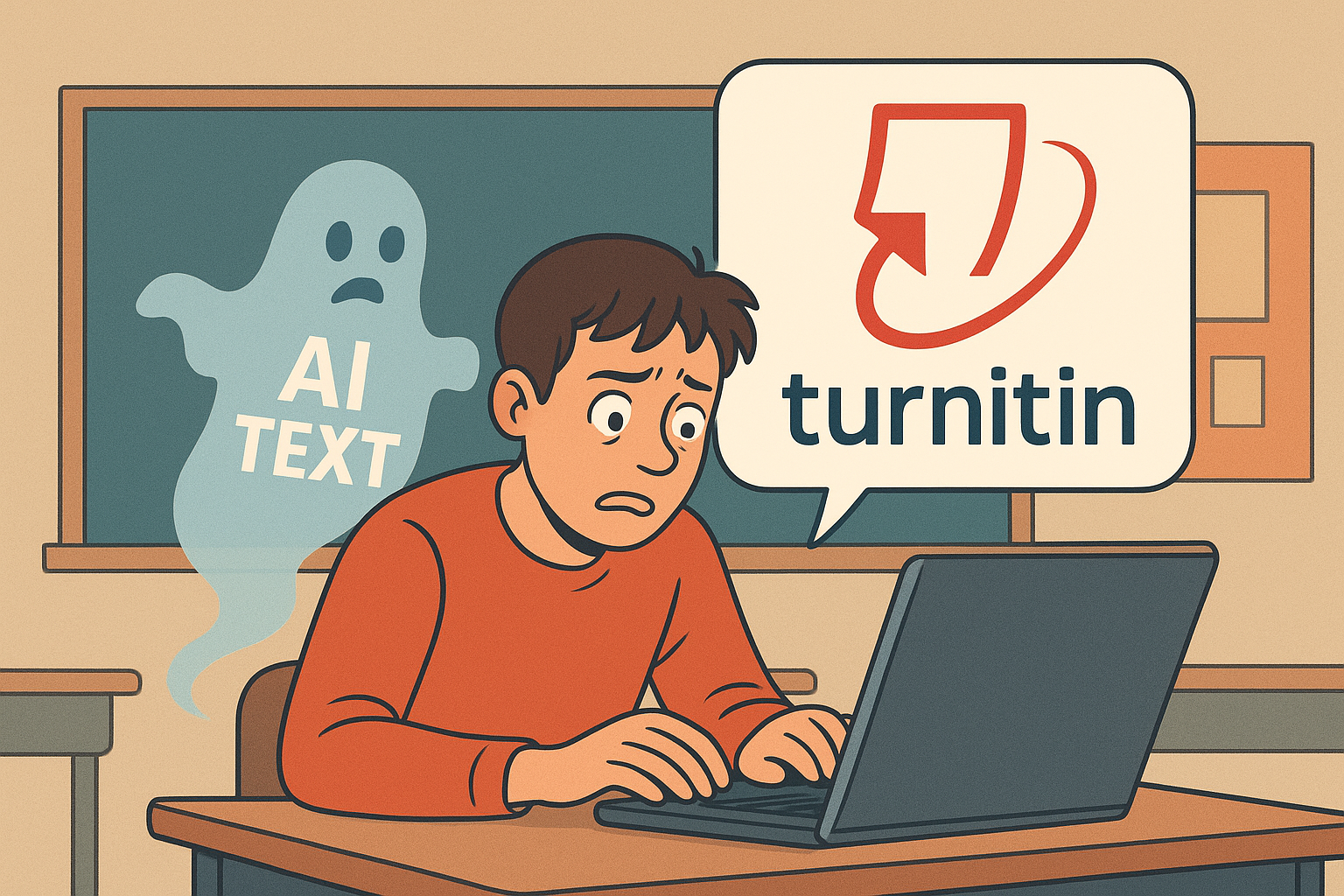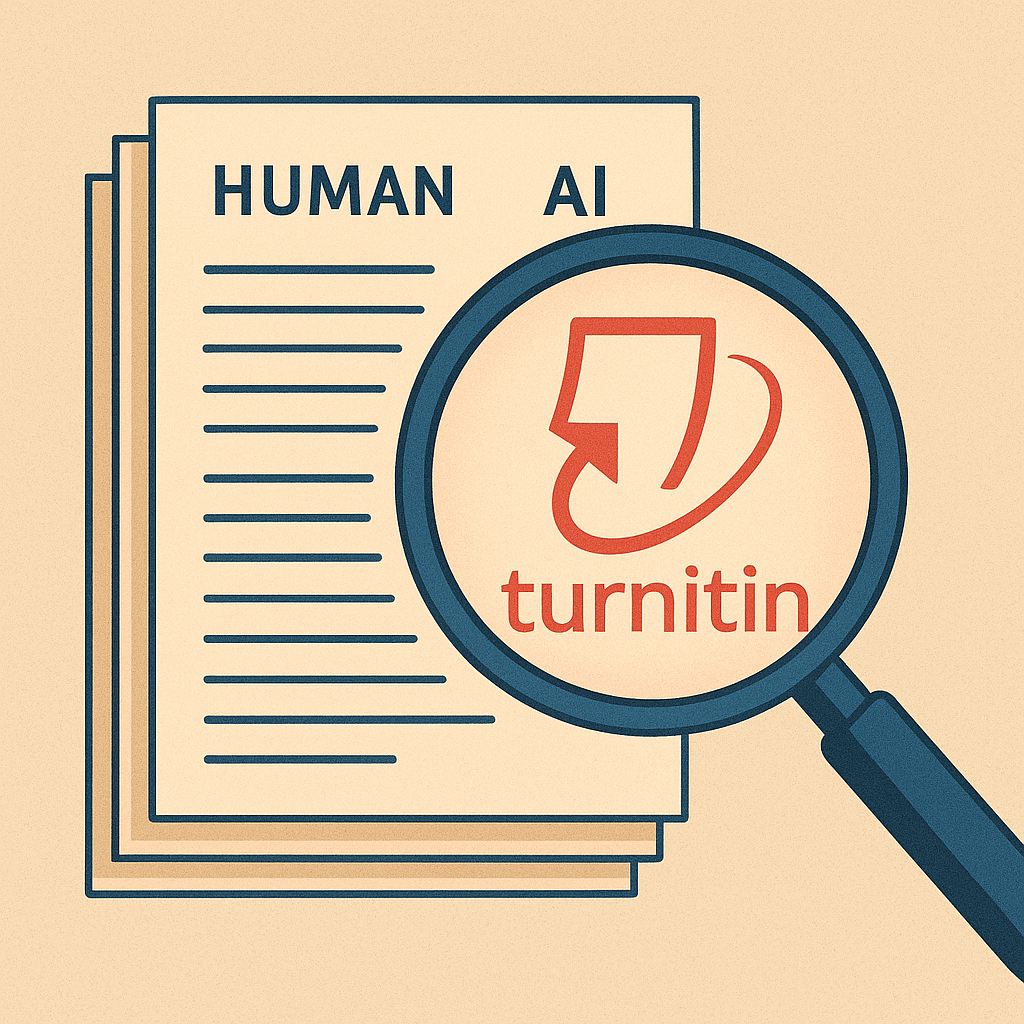Does Turnitin Detect AI? Understanding Its Detection Capabilities

Let’s just say it out loud—this is the question every student, teacher, and freelancer who’s been dabbling with ChatGPT (or any AI tool) has in their head but maybe doesn’t want to ask too loudly: “Can Turnitin actually catch me if I use AI?”
I mean, we all know Turnitin’s been the big scary plagiarism checker since forever. Back in college, people would literally rewrite Wikipedia sentences just to dodge the dreaded similarity report.
But now, we’re in a new era: AI isn’t just helping people brainstorm—it’s straight-up writing whole essays, blog posts, and (let’s be honest) some assignments that were due yesterday.
So let’s unpack it. Does Turnitin detect AI? Yes… kinda. No… kinda. It’s complicated.
AI Writing Tool
AI writing tools (ChatGPT, Jasper, Claude, Bard—you name it) are basically the new calculators for words. You feed them a prompt, they spit out a polished answer that sounds human enough to pass. That’s why they’re both magical and terrifying.
The big issue? Academic integrity. (Yeah, I know, the phrase makes everyone groan.) Schools, universities, and even some businesses are scared that students or employees are submitting work they didn’t actually write.
AI writing detection isn’t as simple as plagiarism. Plagiarism is like, “Did you copy this from somewhere in Turnitin’s database or the internet?” AI detection is more like, “Does this sound too machine-like to be written by a human?” Big difference.
Does Turnitin Detect AI?
Short answer: Yes, Turnitin claims it can detect AI-generated content.
Longer answer: It’s messy.
Turnitin rolled out its AI writing detection indicator in 2023. They bragged it could identify AI-generated text (from tools like ChatGPT) with about 98% confidence on AI-only documents. Impressive, right? But then the footnotes and fine print showed up: false positives, limitations, and a lot of angry Reddit threads from students saying their original human writing got flagged as AI.

How Turnitin’s AI Detection Tool Works
Let me break this down in plain English because the official explanations are filled with “linguistic features” and “probable word distributions” that sound like a bad sci-fi novel.
Side note: Sometimes, this leads to hilarious errors. I once saw a forum post where a student’s super-polished writing (because they were just… good at English) got flagged as AI. Imagine being told, “You write too well, must be a robot.”
Turnitin: Pros & Cons
Let’s give Turnitin’s AI checker its moment.
Pros
Cons
In other words: it’s a tool, not a verdict.
The Role of AI Detection in Education

I’ll say this as someone who’s been both a student and worked with universities: AI detectors are about control.
Colleges don’t want to feel like they’re grading ChatGPT. Professors don’t want to reward laziness. And honestly? Fair enough. Writing assignments were supposed to show your thinking.
AI can be a tool, not just a shortcut. Instead of banning it, some educators are starting to teach students how to use AI responsibly. Like brainstorming, editing, or language support.
Maybe the real question isn’t “does Turnitin detect AI?” but “how should we handle AI in education?”
Best Practices if You’re a Student
(Okay, let’s get practical here. If you’re reading this as a student—don’t worry, I’m not judging. I’ve been there.)
Best Practices if You’re a Teacher
Teachers, if you’re still here—bless you. I know it’s frustrating. Some tips:
Final Thoughts
So—does Turnitin detect AI?
Yeah, it does. Sort of. Sometimes too well, sometimes not well enough. It’s a powerful tool, but not foolproof.
Here’s the deal: if you’re writing, use AI as support, not a crutch. If you’re teaching, don’t lean blindly on detection tools—combine them with judgment.
And if you’re Turnitin? Well, good luck keeping up with the pace of AI writing. Because let’s be honest: this game is just getting started.
